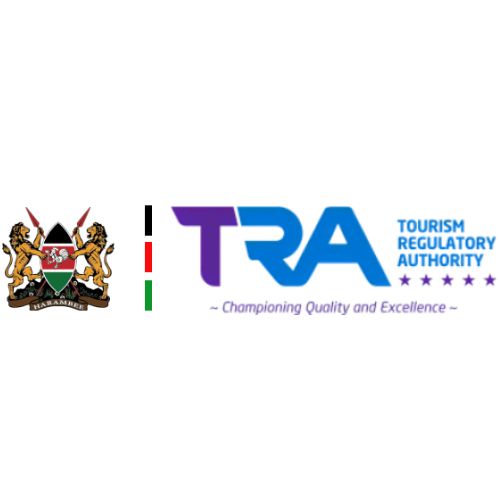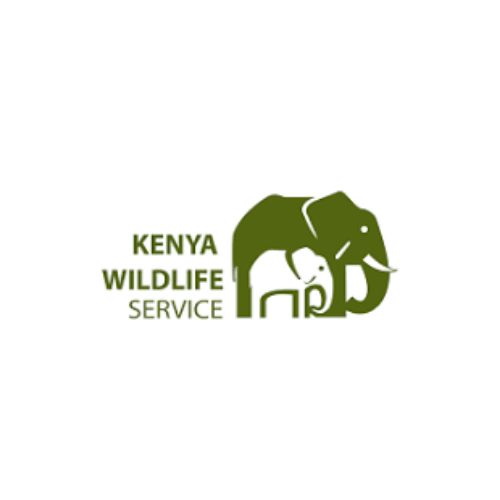+254 703 829 961
Best Time to Visit Kenya for an Unforgettable Safari
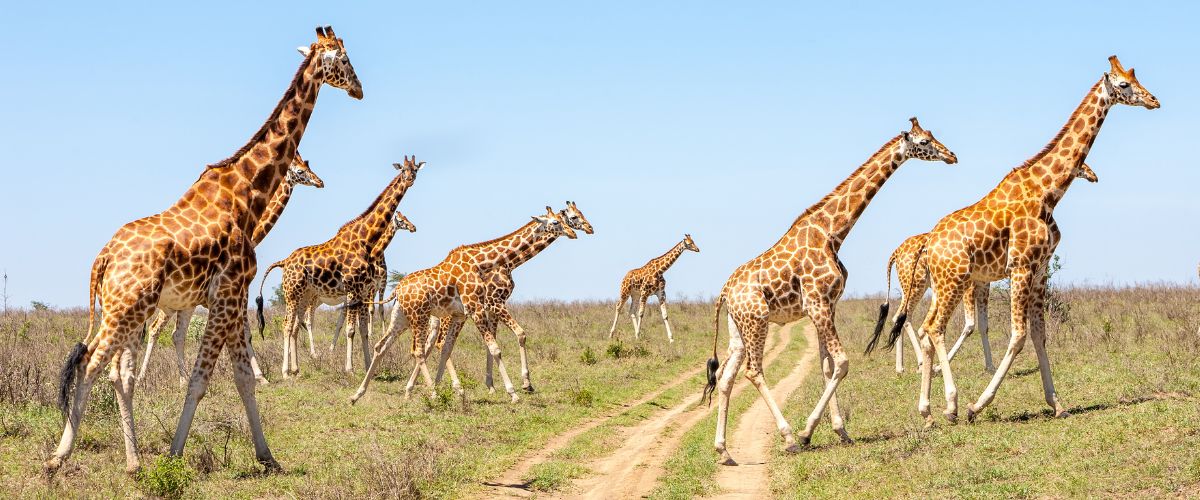
The best time to visit Kenya for safari defines every traveler’s experience. Kenya is one of Africa’s most iconic safari destinations, home to sweeping savannahs, acacia plains, and rich wildlife diversity. From the Great Rift Valley to the Indian Ocean coast, timing determines when landscapes are most scenic and wildlife most active.
Kenya’s Seasons and Their Safari Impacts
Because Kenya straddles the equator, the country does not experience four temperate seasons, but rather cycles of dry and rainy periods. These influence vegetation, animal movement, road access, mosquito prevalence, and overall viewing conditions.
Rainy Seasons
Kenya typically has two rainy seasons:
- Long rains (March – May): This is the heavier rainfall period. Many parts of the country see frequent downpours, muddy roads, and some lodges/camps may temporarily close or reduce service.
- Short rains (November – early December): A lighter rainy season with sporadic showers, often in the afternoons.
During the rainy seasons, bush is lush, landscapes are verdant, and many migratory and resident birds may be in breeding plumage. However, heavy rain can interrupt game drives, roads (especially in more remote areas) may become impassable, and sighting visibility can be reduced.
Dry Seasons
- Primary dry season (June – October): This is the classic “safari season” in Kenya. Rainfall is minimal, foliage thins, and wildlife congregate near water sources. Visibility is high, and game drives are more reliable.
- Secondary dry window (January – February): After the short rains, there is usually a dry period when the land is fresh, the skies are clear, and animals are generally well dispersed, allowing good viewing.
In summary
| Season | Months | Conditions | Highlights |
|---|---|---|---|
| Long rains | March – May | Frequent downpours; muddy and sometimes impassable roads; some lodges may shut down (Horizon Guides) | Lush scenery, dramatic skies, fewer crowds, lower prices, vibrant birdlife |
| Short rains | November – early December | Afternoon showers, occasional disruptions | Green landscapes, fewer tourists, decent wildlife viewing |
| Main dry | June – October | Peak travel season, higher prices, higher occupancy in camps | Excellent wildlife viewing, thin vegetation, the Great Migration, reliable game drives |
| Short dry | January – February | Hot, dry, fewer crowds than June–Oct | Great for combining beach & safari, good for newborn wildlife sightings |
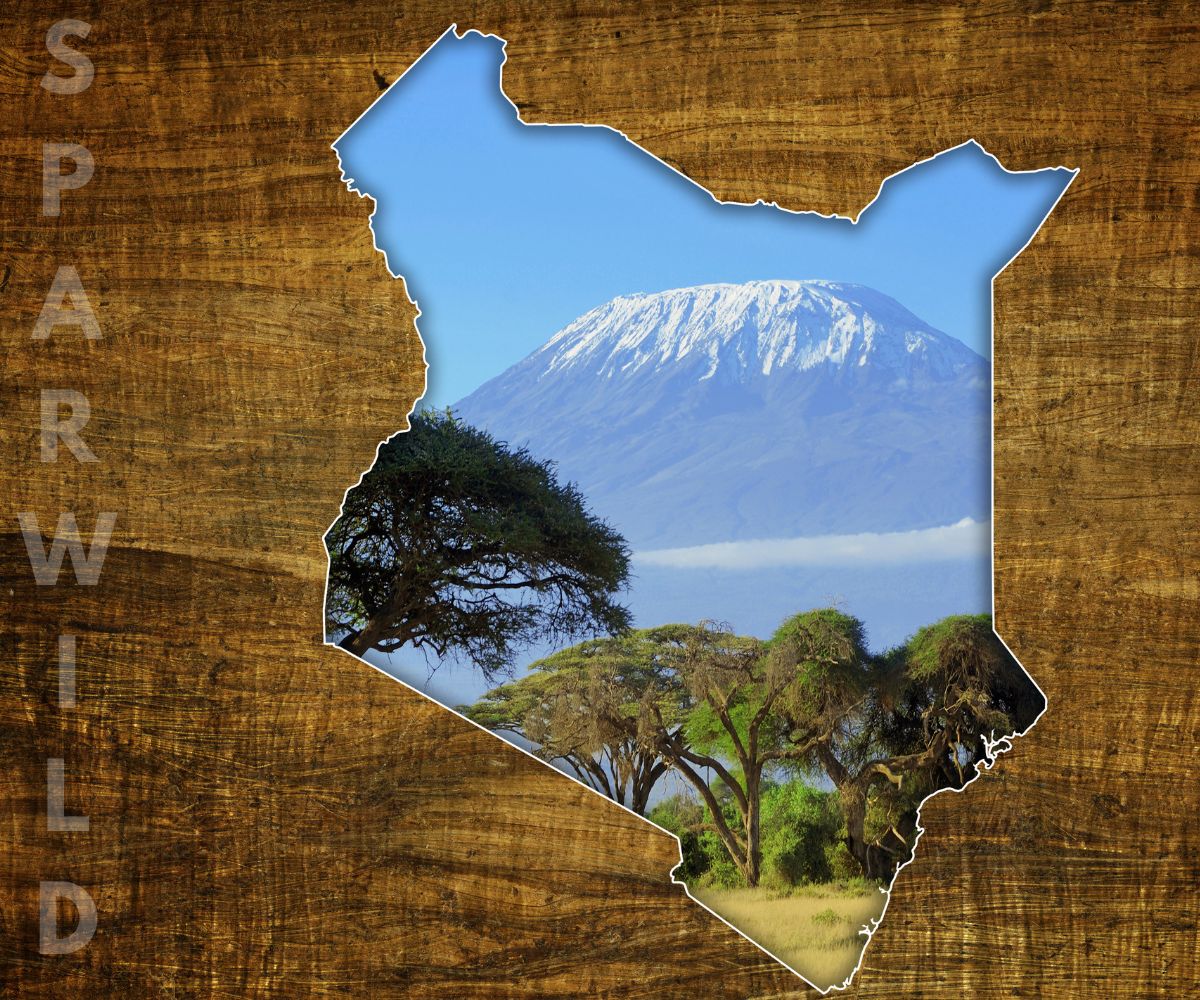
Optimum Times & “Shoulder” Windows
While June through October tends to offer the most consistent “classic safari” conditions across much of Kenya, many safari guides and travel writers identify two shoulder-periods that can be especially rewarding:
- June: As the land transitions from rain to dry, early in June vegetation is still relatively lush, but game begins to congregate. It’s cooler and less crowded than peak months.
- September–October: By September, the main herds of migrating animals are still present; vegetation is thinning; in early October, crossing activity may still occur before the short rains begin. Crowds begin to ease.
Special Highlight: The Great Wildebeest Migration & River Crossings
One of Kenya’s most dramatic wildlife spectacles is the annual Great Wildebeest Migration. While the bulk of the migration cycles through Tanzania’s Serengeti, for much of July through September (and sometimes into October), huge herds move into the Maasai Mara in southwestern Kenya, and many cross the Mara River in the process.
- The river crossing events—when wildebeest (and accompanying zebra, antelope) challenge crocodile-infested waters—are especially sought after by safari travelers. These often occur in August and September.
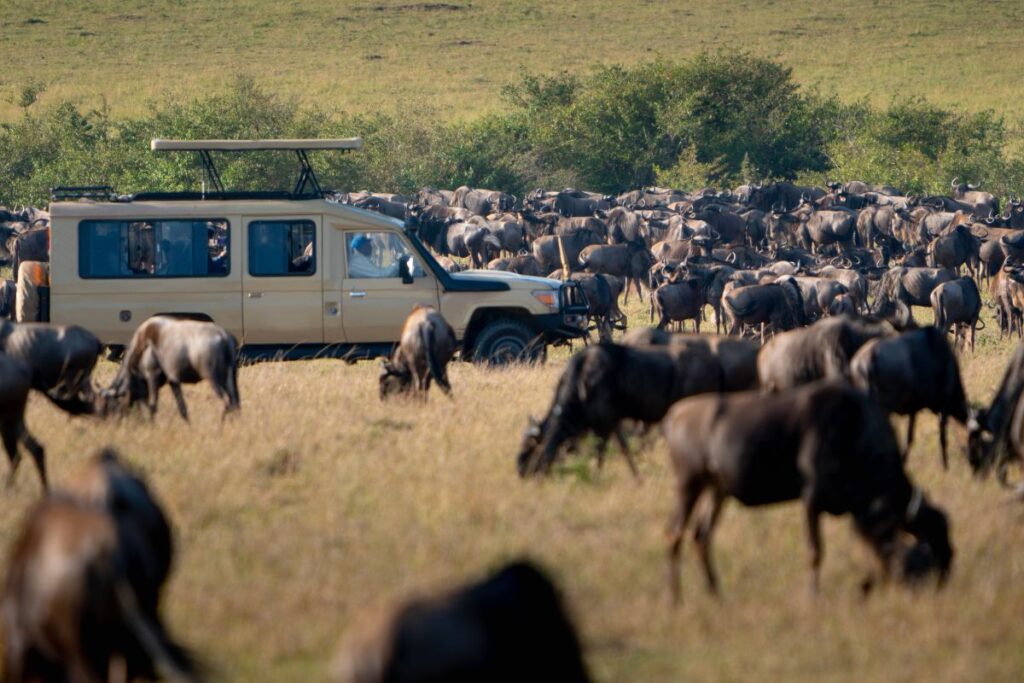
Crossings depend on rainfall patterns, herd movements, and river levels, they are not perfectly predictable. Staying several nights in the Mara region increases your chances of observing the spectacle. Thus, if your safari goal is to witness dramatic river crossings, the months August and September are among the best bets.

Region-Specific Timing Considerations
Kenya is not uniform, and timing can vary in value depending on which regions you intend to visit. The table below highlights special region-level notes:
| Region / Park | Best Months | Notes |
|---|---|---|
| Maasai Mara & Great Rift Valley parks | July – October (especially August–September) | Best time to see migration crossings and excellent general game viewing |
| Northern Kenya (Samburu, Laikipia, etc.) | June – October | Drier period helps with road access; wildlife often more concentrated (Intrepid Travel) |
| Coastal Kenya (Mombasa, Diani, Lamu, etc.) | October – March, especially November–December and January–February | For beach, snorkeling, and relaxed coastal time, these months tend to offer calmer seas and more favorable conditions (AfricanMecca Safaris) |
| Highland, forest, or mountain areas (e.g. Mount Kenya) | Dry months (June to October, and January to February) | Trails are more passable, visibility is better (Hayes & Jarvis) |
If your itinerary combines safari and beach or highland treks, aim to choose months that maximize overlap of favorable conditions.
Balancing Wildlife, Cost & Crowds
Choosing “the best” time is often a matter of balancing three key variables:
- Wildlife abundance & spectacle
- Crowds & lodge availability
- Cost & value
- The peak months (August, September) yield dramatic wildlife scenes, especially in the Maasai Mara, but also come with crowded parks and premium pricing.
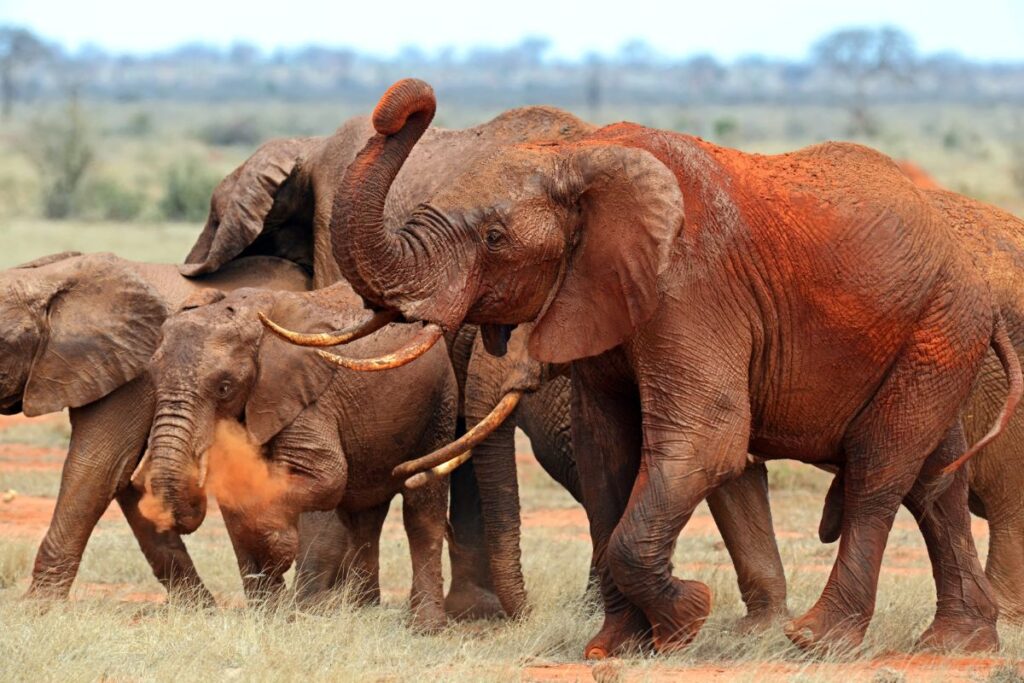
- The shoulder windows (June, September–October) often offer a sweet spot: excellent game viewing, somewhat gentler crowds, and sometimes more favorable pricing than midsummer.
- The January–February period can be a bargain relative to peak season, with fewer travelers yet still very good conditions.
- The rainy seasons (especially April–May) see lower prices, less competition for safari camps, and a very different aesthetic—lush, dramatic skies, green landscapes—but at the cost of potential disruption and softer wildlife visibility.
If your priority is spectacular wildlife and the migration, plan for June–October. If your priority is peaceful landscapes, lower cost, fewer crowds, then consider the January–February window or even early November (before heavy rains).
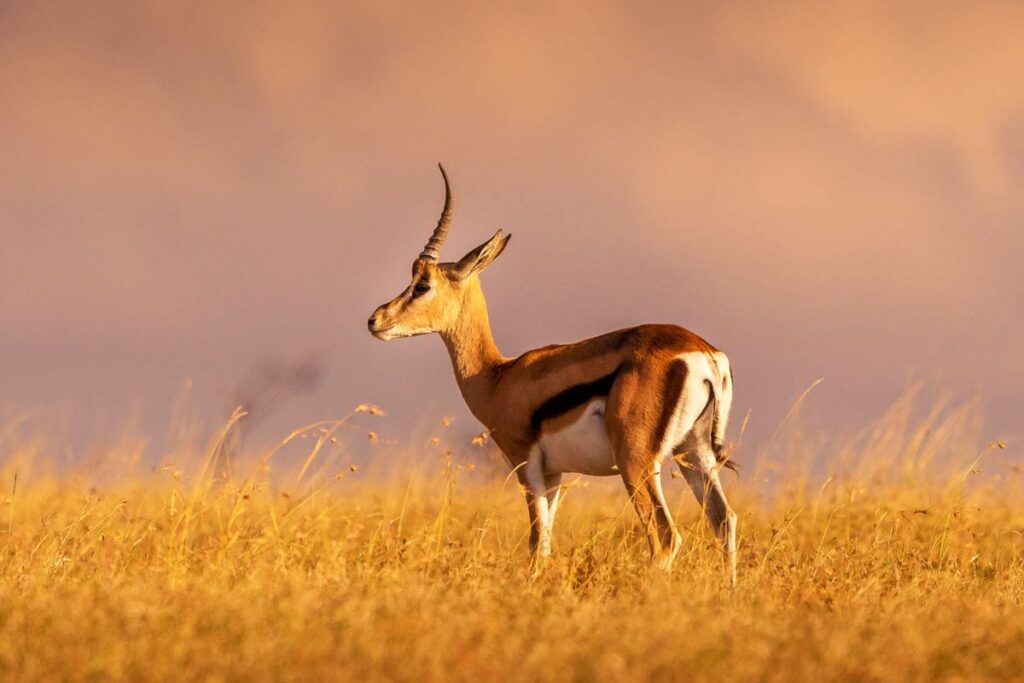
- Check road and camp status in rainy months
In April–May especially, some roads may be disrupted and some camps may close or limit operations. - Plan according to your interests
If you’re especially keen on birding, the rainy seasons bring migratory birds; if landscape photography is your interest, lush green valleys and dramatic skies may be compelling in the wet season.
Practical Tips for Timing Your Safari
- Combine regions smartly
For example, one could do a Mara safari in August–September and then head to the coast in October–November as rains retreat. - Stay multiple nights in key zones
Wildlife is unpredictable. Having more nights in high-density zones (e.g. Maasai Mara during migration) improves your chances to catch special events like river crossings. - Be flexible
The timing of rains and migration can shift with seasonal variations. Having some buffer days or alternate destinations in your itinerary helps. - Book early in peak season
Because camps and lodges fill fast in July–September, early booking is essential.
Summary & Recommendation
- Optimal window for classic safari: June through October (with August–September often the pinnacle).
- Best balance (shoulders): June and September–October often combine strong wildlife viewing, fewer crowds, and relatively better rates.
- Secondary dry window: January–February is a strong alternate, especially for those combining safari with coastal stays or avoiding the crowded high season.
Seasons to approach with caution: March–May (especially April–May) and the short rains (November–December) present trade-offs of lower cost and fewer people, but greater logistical challenges.

Travel Logistics & Safety Information: Planning Your Safari with Confidence
Knowing the best time to visit Kenya for safari is only part of the planning process—ensuring your health, legal documentation, insurance coverage, and transport arrangements are in order is equally critical for an unforgettable experience. At Sparwild African Tours & Safaris, we guide travelers through these essentials to maximize comfort, safety, and enjoyment.
1. Health & Vaccinations
Before traveling to Kenya, it is essential to prioritize health preparations, especially if you are planning a safari during the best time to visit Kenya for safari:
Recommended Vaccines: Yellow fever (mandatory for certain countries), typhoid, hepatitis A and B, and routine vaccinations like tetanus and polio.
Malaria Precautions: Kenya has malaria-risk regions, particularly in lowland and coastal areas. Anti-malarial prophylaxis, insect repellents, and mosquito nets are strongly advised.
Other Health Tips: Carry a basic medical kit, stay hydrated during safari drives, and practice food and water safety to avoid gastrointestinal issues.
2. Visa Requirements
Understanding entry regulations is critical to avoid travel disruptions during your safari, especially when planning the best time to visit Kenya for safari:
Most travelers require a Kenya eVisa, obtainable online before arrival.
Ensure your passport is valid for at least six months from your planned entry date.
For multi-country itineraries, check transit visa requirements and confirm airline documentation policies.
3. Travel Insurance
Comprehensive travel insurance is essential, particularly if your safari coincides with the best time to visit Kenya for safari:
Coverage should include medical emergencies, evacuation, trip cancellations, lost luggage, and activity-specific risks such as game drives.
Choosing insurance that covers safari-specific activities protects travelers against unforeseen events in remote areas.
4. Road & Transport Conditions
Kenya’s landscape and weather impact transport accessibility, which can affect your experience during the best time to visit Kenya for safari:
Dry Season (June–October): Roads are generally accessible across parks and reserves, allowing smooth transfers between safari locations.
Rainy Seasons (March–May, November–early December): Heavy downpours may render certain roads impassable, particularly in remote northern or highland regions. Travelers should be prepared for alternative routes or vehicle upgrades (4×4).
Airport Transfers: Plan ahead for transfers from Nairobi, Mombasa, or Kisumu airports to safari lodges. Private tours with reputable operators like Sparwild African Tours ensure timely, safe, and comfortable transfers.
Practical Recommendations
Timing Flexibility: Incorporate buffer days to accommodate weather disruptions or wildlife unpredictability, ensuring your safari aligns with the best time to visit Kenya for safari.
Local Guidance: Rely on professional safari operators for real-time updates on road and park conditions.
Packing Essentials: Include layered clothing for fluctuating temperatures, sunscreen, hats, sturdy footwear, and binoculars for optimal wildlife viewing.
With your health, visas, insurance, and transport plans in place, the next step is to tailor your safari experience to your travel style. Understanding Target Audience Considerations ensures your safari during the best time to visit Kenya for safari is perfectly suited to your priorities—whether you are traveling solo, with family, as a couple, or as a professional photographer.
Target Audience Considerations: Tailoring Your Safari Experience
While knowing the best time to visit Kenya for safari is essential, aligning your trip with your personal travel style, priorities, and interests ensures a truly unforgettable experience. Kenya offers diverse landscapes, wildlife spectacles, and cultural richness, so understanding how your preferences intersect with timing is key to planning the perfect safari.
1. Solo Travelers
Solo adventurers often seek immersive wildlife encounters, personal growth, and flexibility:
Traveling during the best time to visit Kenya for safari (June–October) provides higher wildlife visibility, allowing solo travelers to enjoy private or small group tours with expert guides.
Solo travelers can benefit from packages that focus on wildlife photography workshops, guided bush walks, or community-based cultural experiences.
Safety, ease of navigation, and social opportunities at lodges are additional considerations to enhance a solo safari experience.
2. Couples & Honeymooners
Romantic safari experiences require privacy, scenic beauty, and memorable wildlife encounters:
The best time to visit Kenya for safari for couples often falls during the shoulder months (June or September–October), offering excellent game viewing with fewer crowds.
Private safari drives, luxury tented camps, and sunset safaris enhance intimacy while still capturing the essence of Kenya’s wildlife wonders.
Combining safari with a coastal getaway or highland retreat allows couples to enjoy both adventure and relaxation during their trip.
3. Families
Traveling with children demands safety, accessibility, and family-friendly activities:
Peak dry months (July–October) offer stable weather, safe roads, and reliable wildlife sightings, making them ideal for family safaris.
Family-oriented lodges provide child-friendly accommodations, guided educational programs, and recreational facilities.
Planning around the best time to visit Kenya for safari ensures children experience both wildlife diversity and comfortable travel conditions.
4. Wildlife Photographers
Photographers require optimal lighting, animal density, and seasonal events:
The best time to visit Kenya for safari is important for capturing dramatic wildlife events such as the Great Wildebeest Migration (August–September) or newborn animals during the January–February window.
Photographers benefit from early morning and late afternoon drives for softer light, reduced crowds, and active wildlife behavior.
Selecting regions strategically, such as Maasai Mara for migration or Amboseli for elephant photography against Mount Kilimanjaro, enhances the potential for iconic shots.
5. Luxury vs Mid-Range Travelers
Budget and comfort preferences influence both timing and accommodations:
Luxury travelers may target peak months (August–September) to witness dense wildlife congregations, enjoy exclusive lodges, and private safari vehicles.
Mid-range travelers can capitalize on shoulder periods (June, September–October) to enjoy excellent wildlife viewing at more accessible rates while avoiding the highest crowds.
Understanding the best time to visit Kenya for safari helps balance costs, wildlife visibility, and overall travel experience.
6. Adventure & Multi-Region Travelers
Travelers combining safari with beach holidays, mountain treks, or cultural tours require careful planning:
Scheduling your trip during the best time to visit Kenya for safari ensures smooth transitions between regions, whether moving from Maasai Mara to coastal resorts, highland forests, or national parks.
Including buffer days in your itinerary accommodates wildlife unpredictability and seasonal weather variations.
Adventure travelers can enhance their experience by blending wildlife drives with snorkeling, hiking, or cultural tours, maximizing both activity and relaxation.
7. Solo Photographers & Digital Nomads
For travelers seeking immersive experiences and work flexibility:
Traveling during quieter periods within the best time to visit Kenya for safari (June or September–October) allows for serene landscapes, reliable internet in lodges, and uninterrupted photography sessions.
Combining safari with remote work or photography retreats enables a balance between productivity and exploration.
Understanding your travel style helps ensure that the best time to visit Kenya for safari aligns with your expectations, comfort, and adventure goals. With your audience type and priorities clearly defined, the next step is to plan your itinerary, logistics, and bookings strategically—maximizing wildlife encounters, avoiding crowds, and ensuring a smooth, memorable safari.
Best Months to Visit Kenya for Wildlife
The timing of your visit directly impacts what wildlife you can see and how comfortable your safari experience will be. Different months offer distinct advantages, from lush scenery to peak animal activity. Understanding the seasonal highlights ensures you choose the best time to visit Kenya for safari based on your interests and priorities.
June – October: Classic dry season, ideal for general safari, excellent wildlife concentration, and the Great Wildebeest Migration in Maasai Mara.
January – February: Secondary dry season; perfect for spotting newborn wildlife and enjoying quieter parks.
March – May (Long Rains): Lush, green landscapes, vibrant birdlife, and fewer tourists; some remote roads may be challenging.
November – Early December (Short Rains): Green scenery, moderate wildlife activity, light showers, and low crowds.
Pro Tip: For most travelers, June through October represents the best time to visit Kenya for safari, combining high wildlife visibility with comfortable travel conditions.
Top Regions in Kenya for Safari by Season
Kenya’s diverse landscapes mean that the best time to visit Kenya for safari can vary by region. Each park or area has its own wildlife cycles, accessibility, and climate conditions. Choosing the right region during the right season enhances both wildlife sightings and overall travel experience. The table below shows the top regions and their optimal months:
| Region / Park | Best Months | Key Highlights |
|---|---|---|
| Maasai Mara & Great Rift Valley parks | July – October (especially Aug–Sep) | Witness the Great Wildebeest Migration, river crossings, and excellent general game viewing |
| Northern Kenya (Samburu, Laikipia, etc.) | June – October | Concentrated wildlife, accessible roads, dry landscapes perfect for game drives |
| Coastal Kenya (Mombasa, Diani, Lamu) | October – March | Beaches, snorkeling, calm seas, and scenic coastal safaris |
| Highlands & Forests (Mount Kenya, Aberdare, Chyulu Hills) | June – October, Jan – Feb | Clear trails, lush scenery, cooler temperatures, ideal for trekking and wildlife photography |
Peak vs Shoulder vs Low Season Guide
Not all safari seasons are equal in terms of wildlife activity, crowds, and cost. Understanding the differences between peak, shoulder, and low seasons allows travelers to plan a safari that matches their priorities. Whether your goal is dramatic wildlife spectacles or quieter, budget-friendly travel, the following guide helps identify the best time to visit Kenya for safari based on seasonality:
Peak Season (August – September)
This period represents the height of the safari experience in Kenya:
Wildlife concentration is at its maximum, particularly in Maasai Mara, Amboseli, and other major parks.
The Great Wildebeest Migration reaches its peak, with thrilling river crossings that are a photographer’s dream.
Expect higher tourist numbers and premium pricing for lodges, camps, and private safari vehicles.
Roads and park facilities are generally in excellent condition, making travel smoother despite the crowds.
Ideal for travelers whose main goal is to witness iconic wildlife events and are willing to book early and invest in luxury or mid-range accommodations.
Pro Tip:
Even within the rainy seasons, early June or November often provides a balanced safari experience, combining green landscapes, fewer crowds, and reliable wildlife sightings. By understanding these seasonal nuances, travelers can choose the best time to visit Kenya for safari based on their specific goals—whether it’s witnessing the Great Migration, enjoying family-friendly safaris, or capturing stunning photographic landscapes.
Shoulder Season (June, September – October)
The shoulder months offer a balanced safari experience:
Wildlife remains abundant, with many animals concentrated near water sources.
Crowds are lighter than during peak months, giving a more private and intimate safari experience.
Lodges and camps often offer slightly better rates, providing good value without compromising wildlife viewing.
Vegetation is still moderately lush in early June, while September–October features thinning foliage for easier spotting and excellent photography conditions.
This period is ideal for travelers who want excellent wildlife experiences without peak-season congestion, making it another excellent window for the best time to visit Kenya for safari.
Low Season (March – May, November – December)
The low season, corresponding to the long and short rains, offers a different safari perspective:
Travel costs are lower, and many lodges offer discounts or flexible packages.
The landscape is lush and green, ideal for scenic photography, birdwatching, and capturing dramatic skies.
Wildlife can be more dispersed due to abundant water, which can make spotting large herds less predictable.
Some roads, particularly in remote areas, may be muddy or temporarily inaccessible, so planning for alternative routes or guided transfers is recommended.
Low season is perfect for travelers prioritizing scenery, solitude, and off-peak pricing rather than concentrated wildlife spectacles.
FAQs: Best Time to Visit Kenya for an Unforgettable Safari
The best time to visit Kenya for safari and experience the Great Wildebeest Migration is between July and October, when millions of wildebeests and zebras cross the Mara River in Maasai Mara. These months fall within the long dry season, ensuring clear skies, dry roads, and abundant wildlife concentrated around water sources. The migration peaks in August and September, creating world-famous scenes of predator-prey interactions. If your goal is to witness this natural spectacle, plan your trip early, as accommodations in the Mara fill up quickly during this peak period.
Yes, June is an excellent time to visit Kenya for safari. It marks the transition from the rainy season to the dry months, offering lush green landscapes and active wildlife. The grass is still fresh, making for stunning photography, yet visibility remains high as animals gather near remaining water points. June is also less crowded than July and August, allowing travelers to enjoy premium safari lodges at more moderate rates. For those who prefer serenity without sacrificing wildlife quality, June represents one of Kenya’s most underrated safari months.
The best months to visit Kenya for wildlife viewing are August and September, when animals are highly visible, and predator activity peaks. During these months, the grasslands are shorter, the weather is pleasant, and game drives are extremely rewarding across parks like Maasai Mara, Amboseli, and Samburu. You can spot the Big Five with ease and capture remarkable photography under clear, golden light. For travelers seeking maximum wildlife diversity, these months represent the best time to visit Kenya for safari, balancing comfort, adventure, and wildlife density.
The low season (March–May and November–December) is the most affordable time to go on safari in Kenya. These months coincide with the rainy seasons, but they also bring discounted rates on accommodations and tours—sometimes up to 40% less than peak periods. While rains may occasionally disrupt travel, wildlife sightings remain excellent, especially for elephants, buffalos, and birds. Landscapes are greener, skies more dramatic, and tourist numbers lower. For travelers seeking value without compromising experience, the low season still provides one of the best times to visit Kenya for safari on a budget.
Kenya’s rainy seasons—March to May (long rains) and November to December (short rains)—transform the landscape into a lush paradise. While some dirt roads become muddy, the parks remain accessible, and wildlife viewing can still be rewarding. Many animals give birth during these months, offering rare photographic opportunities. Birdwatchers especially enjoy the abundance of migratory species. Although the rains make it less ideal for extensive travel, it’s still a beautiful and peaceful period to explore. For travelers who appreciate solitude and greenery, this can quietly be one of the best times to visit Kenya for safari in a more relaxed setting.
For professional and hobbyist photographers, the best time to visit Kenya for safari photography is during the dry season (June–October). Wildlife gathers near shrinking waterholes, skies are clear, and light conditions are perfect for morning and evening shoots. However, the green season (November–December) offers lush backdrops, vibrant birdlife, and fewer vehicles, allowing creative, undisturbed compositions. Whether capturing predator chases or tranquil landscapes, both seasons deliver stunning contrasts. The choice depends on your artistic goals—dramatic action in the dry months or rich color and mood during the rains.
Yes, visiting Kenya during the rainy season can still be an unforgettable experience. Despite occasional showers, parks like Amboseli, Tsavo, and Samburu remain open, with plenty of wildlife activity. The scenery transforms into vibrant green, birdlife flourishes, and lodges offer great value. Early June and late November, which border the rains, often provide the perfect middle ground—green scenery, fewer crowds, and reliable wildlife sightings. For travelers who prefer privacy and serenity, this period is one of the best times to visit Kenya for safari away from the usual tourist rush.
Kenya’s diverse ecosystems shine in different months, allowing you to plan your safari strategically. The Maasai Mara is best from July to October for the migration; Samburu and Laikipia thrive from June to October with dry conditions; coastal regions like Diani and Lamu peak between October and March for beach-safari combinations; and Mount Kenya, Aberdare, and Chyulu Hills are perfect in June–October and January–February for hiking and forest safaris. Each region aligns uniquely with the best time to visit Kenya for safari, depending on whether your focus is wildlife, adventure, or relaxation.
If you plan to travel during Kenya’s peak safari season (July–October), it’s wise to book 6–12 months in advance, especially for Maasai Mara lodges near migration hotspots. Availability during these months is limited due to global demand. For shoulder or green seasons, 3–4 months of lead time is usually enough to secure excellent camps and guides. Booking early not only guarantees accommodation but also gives you access to better deals and personalized itineraries—ensuring you make the most of the best time to visit Kenya for safari.
Yes. Kenya is a year-round safari destination, making it suitable for both families and first-time travelers. The dry months (June–October) are the most dependable, offering smooth travel logistics and outstanding wildlife visibility. However, the short rains (November–December) can also be appealing, with lush scenery and fewer tourists. Many family-oriented lodges provide tailored experiences such as junior ranger programs, guided nature walks, and flexible game drive schedules. Regardless of when you travel, Kenya’s diversity ensures there’s always a remarkable experience waiting—proving that every season can be the best time to visit Kenya for safari, depending on your preferences.
Sparwild African Tours and Safaris stands out as one of the best tour operators in Kenya for travelers planning the best time to visit Kenya for safari. The company offers expert guidance on seasonal travel—helping you align your trip with peak wildlife activity, comfortable weather, and your preferred travel style. Whether you want to witness the Great Wildebeest Migration, enjoy a quiet off-season adventure, or combine a safari with a coastal retreat, Sparwild customizes itineraries that maximize value, experience, and convenience. With a strong local presence, professional guides, and sustainable tourism practices, Sparwild ensures every journey delivers an unforgettable Kenyan safari experience.
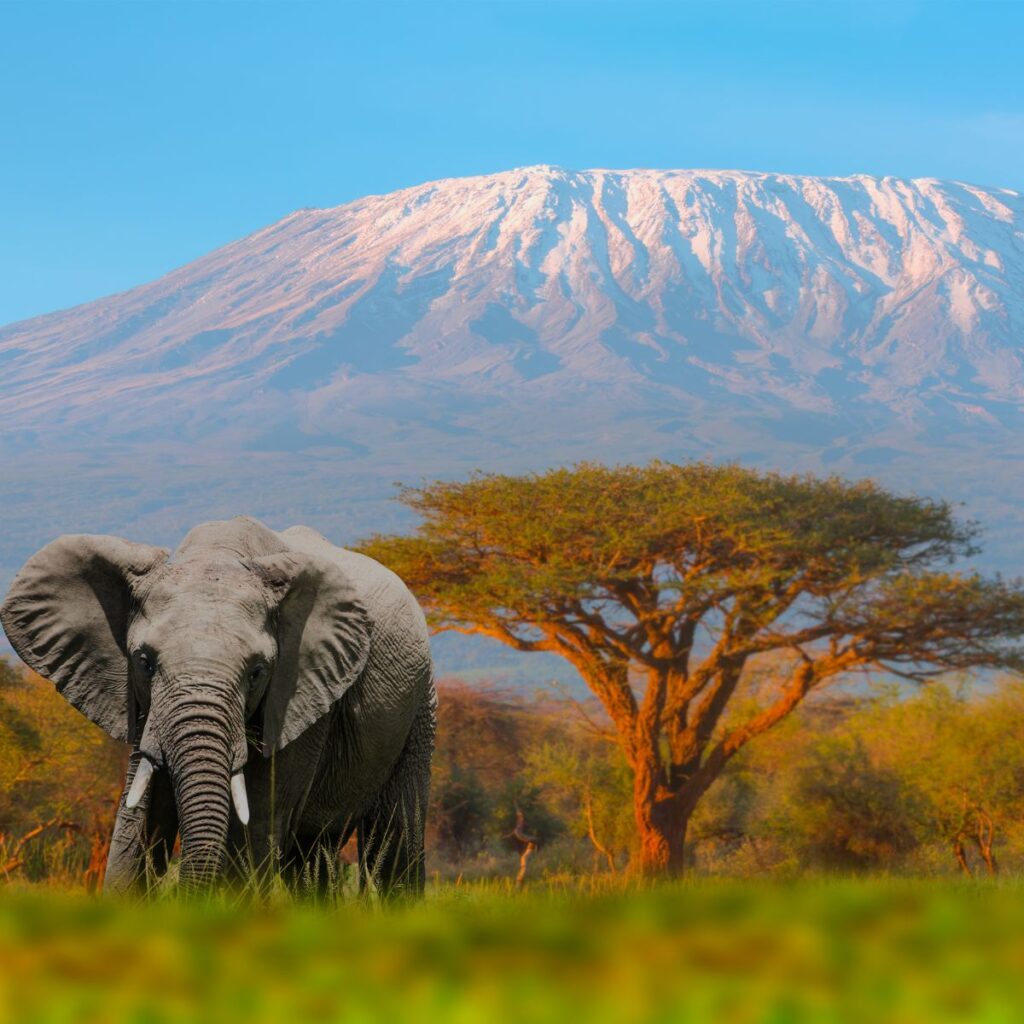
Go To Africa: Plan a Safari With Sparwild African Tours and Safaris
Experience the wild heart of Africa with Sparwild African Tours and Safaris, your expert guide to Kenya’s breathtaking landscapes and legendary wildlife. From the Great Wildebeest Migration in Maasai Mara to the golden plains of Amboseli, our itineraries are tailored to your schedule, budget, and interests—perfectly timed for the best time to visit Kenya for safari. Plan your next adventure today, explore Sparwild tour packages, and book directly through our website to secure your spot during the best time to visit Kenya for safari season.
PARTNERS AND ACCREDITATIONS
Resource Links
ABOUT US
Sparwild African Tours and Safaris is a trusted best tour operator in Kenya offering unforgettable African tours and safaris across Kenya, Tanzania, and East Africa. We design tailor-made safari packages that connect travelers with nature, wildlife, and authentic African culture while promoting responsible and sustainable tourism.
TOP SAFARIS
OFFICE ADDRESS
Ruiru Town, Kenya
Phone: (+254) 703 829 961
Info@sparwildafricantoursandsafaris.com


